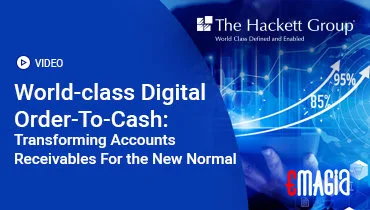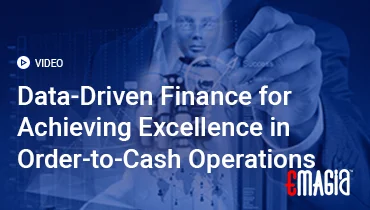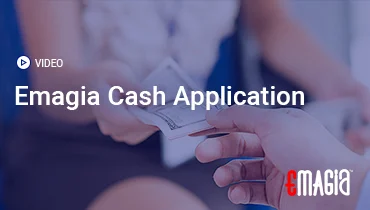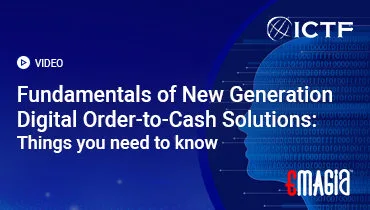In the dynamic and increasingly complex landscape of modern finance, the ability to extend credit quickly, accurately, and securely is paramount. Banks, financial institutions, and even B2B companies providing trade credit face an ever-present challenge: managing the risk that a borrower might fail to repay. Traditionally, assessing this credit risk has been a manual, time-consuming, and often subjective process, reliant on outdated data and human interpretation. This conventional approach, while foundational, struggles to keep pace with the sheer volume of data, the speed of transactions, and the rapid shifts in economic conditions that define today’s global markets.
The limitations of manual credit analysis are no longer just an inefficiency; they represent a significant barrier to growth and a potential vulnerability to financial stability. Delays in credit decisions can lead to lost business, inconsistent risk assessments can result in unexpected losses, and the sheer administrative burden can drain valuable resources. Recognizing these critical pain points, forward-thinking organizations are embracing a transformative solution: Credit Risk Automation.
This comprehensive guide will delve deep into what Credit Risk Automation truly means, exploring its core components, the cutting-edge technologies that power it, and the profound benefits it delivers. We’ll examine how this innovative approach moves beyond traditional limitations to provide a more agile, data-driven, and proactive framework for managing credit risk. Get ready to discover how Credit Risk Automation is reshaping lending decisions, fostering greater efficiency, enhancing accuracy, and ultimately securing the financial future of businesses in an unpredictable world.
Understanding Credit Risk Automation: A New Era of Risk Management
To fully appreciate this strategic shift, let’s establish a clear understanding of what Credit Risk Automation entails and how it marks an evolution in risk management.
What is Credit Risk Automation? Leveraging Technology for Smarter Lending
Credit Risk Automation refers to the strategic application of advanced technologies, including Artificial Intelligence (AI), Machine Learning (ML), Robotic Process Automation (RPA), and sophisticated data analytics, to streamline, enhance, and accelerate the entire credit risk management process. Its primary goal is to minimize human intervention in repetitive and data-intensive tasks, thereby increasing efficiency, improving accuracy, and providing more dynamic insights into creditworthiness and potential default. It transforms what was once a largely manual and reactive process into a proactive, intelligent, and real-time capability.
Evolution from Traditional to Automated Credit Risk: A Necessary Leap
Traditional credit risk management, while foundational, is often characterized by:
- Backward-Looking Data: Relying heavily on historical financial statements, which may not reflect current realities.
- Manual Processes: Tedious data entry, spreadsheet-based analysis, and manual document review.
- Subjectivity: Reliance on human judgment, leading to potential inconsistencies and biases.
- Slowness: Protracted approval cycles due to manual bottlenecks.
Credit Risk Automation represents a necessary leap. It moves beyond static analysis to dynamic, real-time assessment. It replaces manual drudgery with intelligent algorithms and automates workflows, allowing human analysts to focus on complex cases and strategic insights rather than data compilation. This evolution is driven by the need for speed, accuracy, and scalability in modern lending environments.
Core Components of a Credit Risk Automation System: The Technology Stack
A robust Credit Risk Automation system is built upon a sophisticated technology stack that orchestrates various capabilities:
- Advanced Data Integration: Connectors to internal systems (ERP, CRM) and external data sources (credit bureaus, alternative data providers, public records).
- Artificial Intelligence (AI) and Machine Learning (ML): The “brain” for predictive modeling, anomaly detection, pattern recognition, and continuous learning from new data.
- Robotic Process Automation (RPA): For automating repetitive, rule-based tasks like data extraction from documents, data entry into systems, and triggering notifications.
- Advanced Analytics and Business Intelligence: Tools for data visualization, customizable dashboards, and generating actionable reports on risk exposure and portfolio performance.
- Automated Workflow Engines: For defining and executing credit approval workflows, routing applications, and managing exceptions based on predefined rules.
These components work in concert to deliver a comprehensive, intelligent, and automated approach to credit risk management.
Key Pillars of an Effective Credit Risk Automation Solution
A truly effective Credit Risk Automation solution integrates several key functionalities to provide a holistic and proactive approach to managing credit risk.
A. Automated Data Ingestion and Normalization: The Foundation of Insight
The first pillar is the ability to ingest and normalize vast amounts of data from diverse sources:
- Seamless Data Connectors: Automated retrieval of financial statements, credit scores, payment histories, public records, news feeds, and even alternative data (e.g., social media sentiment, supply chain data).
- Data Cleansing and Normalization: Automatically transforming disparate data formats into a consistent, usable structure for analysis, ensuring data quality and reliability.
- Intelligent Document Processing (IDP): Using AI-powered OCR and NLP to extract relevant financial information from unstructured documents like PDF invoices or bank statements, eliminating manual data entry.
This ensures that credit analysts have access to comprehensive, real-time, and accurate information.
B. Intelligent Credit Scoring and Assessment: Dynamic Risk Evaluation
This is where AI and ML truly shine, moving beyond static scores to dynamic risk evaluation:
- AI/ML-Driven Credit Models: Developing highly predictive models that assess the probability of default (PD), loss given default (LGD), and exposure at default (EAD) with greater precision than traditional statistical models. These models learn and adapt over time.
- Dynamic Credit Scoring: Providing continuously updated credit scores that reflect real-time changes in a borrower’s financial health or market conditions, rather than relying on periodic manual updates.
- Predictive Analytics for Risk: Leveraging historical data and external factors to forecast future credit risk trends, identify potential delinquencies, and pinpoint early warning signs of distress.
This proactive assessment enables more informed and agile lending decisions.
C. Automated Workflow and Decisioning: Streamlining the Process
Automation streamlines the entire credit approval and review workflow, reducing bottlenecks and accelerating decision-making:
- Automated Application Processing: Automatically validating applicant data, running background checks, and initiating initial credit assessments based on predefined rules.
- Rule-Based Automation: Configuring automated triggers for actions like credit limit adjustments, risk re-evaluation, or routing applications for human review based on specific criteria.
- Tiered Approval Workflows: Automatically routing credit applications through appropriate approval levels based on risk score, loan amount, or other configured parameters.
This significantly cuts down turnaround times for credit decisions.
D. Continuous Monitoring and Early Warning Systems: Proactive Surveillance
Credit risk doesn’t end after loan disbursement. Credit Risk Automation enables constant vigilance:
- Real-time Portfolio Surveillance: Continuously monitoring the entire loan portfolio for changes in borrower behavior, industry trends, or macroeconomic shifts.
- Anomaly Detection: AI algorithms identify unusual patterns or deviations from normal financial activity that might signal emerging risk or potential fraud.
- Proactive Alerts and Notifications: Automatically generate alerts for analysts and relationship managers when a borrower’s risk profile changes, a credit limit is approached, or other predefined thresholds are met.
This proactive approach allows for timely intervention and mitigation, minimizing potential losses.
E. Integrated Reporting and Analytics: Actionable Insights
A comprehensive Credit Risk Automation solution provides robust reporting capabilities:
- Customizable Dashboards: Real-time dashboards offer intuitive visualizations of key credit risk metrics, portfolio concentrations, and overall risk exposure.
- Performance Tracking: Monitoring of credit decision speed, approval rates, default rates, and the effectiveness of risk mitigation strategies.
- Drill-down Capabilities: The ability to delve into granular data for specific borrowers, industries, or loan types to conduct in-depth analysis.
- Regulatory Reporting: Automated generation of reports required by regulatory bodies, ensuring compliance and reducing manual effort.
These insights empower strategic decision-making at all levels of the organization.
Transformative Benefits of Credit Risk Automation
The adoption of Credit Risk Automation delivers a cascade of profound advantages that fundamentally reshape how businesses manage their financial risk and interact with their customers.
1. Enhanced Accuracy and Drastically Reduced Errors
Automating data ingestion, processing, and decisioning significantly minimizes human error, which is common in manual, repetitive tasks. This leads to more precise credit assessments, fewer misjudged risks, and higher data integrity across the credit lifecycle.
2. Accelerated Credit Decision-Making and Faster Onboarding
By streamlining workflows and automating analysis, Credit Risk Automation drastically cuts down the time required for credit approval. This means faster responses to loan applications or credit requests, enabling businesses to seize opportunities quickly and enhance the customer experience through expedited onboarding.
3. Significant Cost Savings and Enhanced Operational Efficiency
The reduction in manual labor, elimination of paper-based processes, and optimization of workflows translate into substantial operational cost savings. Credit analysts are freed from tedious data entry and can focus on higher-value activities like complex risk analysis, strategic planning, and customer relationship management.
4. Improved Risk Mitigation and Reduced Losses
With real-time monitoring, predictive analytics, and early warning systems, Credit Risk Automation enables proactive identification of high-risk accounts and emerging threats. This allows for timely intervention, such as adjusting credit limits, restructuring terms, or initiating collections sooner, thereby significantly reducing potential bad debt and financial losses.
5. Greater Scalability and Adaptability to Market Changes
Credit Risk Automation platforms are designed to handle exponentially larger volumes of credit applications and monitor vast portfolios without a proportional increase in headcount. They can also quickly adapt to new data sources, evolving market conditions, and changing regulatory requirements, providing unprecedented flexibility and resilience.
6. Richer Insights and Superior Predictive Power
By leveraging AI and machine learning to analyze diverse datasets, Credit Risk Automation moves beyond historical analysis to provide forward-looking insights. It can identify subtle patterns and correlations that human analysts might miss, leading to more accurate risk predictions and better-informed strategic decisions.
7. Enhanced Customer Experience and Competitive Advantage
Faster, more consistent, and data-driven credit decisions lead to a superior customer experience. Businesses can offer tailored credit products, respond to customer needs more swiftly, and build stronger relationships, ultimately gaining a significant competitive advantage in the market.
Implementing Credit Risk Automation: A Strategic Roadmap
Transitioning to an automated credit risk management framework is a significant strategic undertaking. A well-defined roadmap is essential for a smooth implementation and maximizing return on investment.
Phase 1: Needs Assessment and Strategy Definition
- Identify Pain Points: Document current manual processes, bottlenecks, error rates, and areas of high cost in your credit risk management.
- Define Objectives: Clearly articulate what you aim to achieve (e.g., reduce credit approval time by X%, increase auto-decision rate to Y%, reduce bad debt by Z%).
- Assess Data Landscape: Understand your current data sources, their quality, and accessibility.
- Establish a Cross-Functional Team: Involve stakeholders from Credit, IT, Sales, and Finance leadership.
Phase 2: Technology Selection and Vendor Partnership
- Evaluate Platform Capabilities: Look for robust data integration, advanced AI/ML, flexible workflow engines, and comprehensive reporting.
- Integration Expertise: Ensure the vendor has proven experience integrating with your existing ERP, CRM, and other core systems.
- Scalability and Security: Verify the platform can handle current and future volumes and meets all security and compliance requirements.
- Vendor Support: Assess implementation methodology, training, and ongoing customer support.
Phase 3: Data Integration and Model Training
- Connect Data Sources: Integrate all internal and external data feeds into the chosen platform.
- Data Mapping and Normalization: Ensure data is consistently mapped and cleaned for analysis.
- Model Training and Fine-tuning: Train AI/ML models using historical credit data. This is an iterative process that often involves human-in-the-loop validation to improve model accuracy over time.
- Configure Workflows: Design and configure automated credit approval and monitoring workflows based on your credit policies and rules.
Phase 4: Pilot Program and Phased Rollout
- Start Small: Begin with a pilot program for a specific customer segment, product type, or region to test the system in a controlled environment.
- Test and Refine: Gather feedback from pilot users, identify areas for improvement, and make necessary adjustments to models and workflows.
- Gradual Expansion: Once successful and optimized, gradually roll out the Credit Risk Automation solution to more business units and customer segments.
Phase 5: Continuous Optimization and Change Management
- Monitor KPIs: Continuously track performance against your defined objectives (e.g., auto-decision rates, credit approval speed, default rates).
- Ongoing Model Refinement: AI models require continuous monitoring and retraining with new data to maintain and improve their accuracy and relevance.
- User Training and Empowerment: Provide ongoing training and support to your credit team, emphasizing their evolving roles from manual processors to strategic analysts and exception managers.
- Foster a Culture of Data-Driven Decisions: Encourage the use of insights from the automated system to drive better lending practices.
Overcoming Challenges in Credit Risk Automation Adoption
While the path to Credit Risk Automation offers immense rewards, it’s not without its potential hurdles. Businesses should anticipate and prepare for these challenges to ensure a smooth and successful implementation.
1. Data Quality and Integration Complexities
The success of any automation initiative hinges on data quality. Inconsistent, incomplete, or siloed data from various internal and external systems can hinder effective integration and accurate analysis. Businesses must invest in data governance, cleansing, and robust integration strategies to ensure a unified and reliable data foundation for their Credit Risk Automation system.
2. Talent and Skill Gaps: Reskilling the Workforce
The shift to Credit Risk Automation changes the roles of credit analysts. They move away from manual data entry and basic analysis to more strategic tasks like interpreting AI insights, managing exceptions, and refining models. This requires a proactive approach to reskilling and upskilling the existing workforce in areas like data analytics, AI interpretation, and process optimization. Addressing fears of job displacement through clear communication and training is vital for successful adoption.
3. Change Management and User Adoption
Implementing new technology inevitably brings organizational change. Resistance from employees who are comfortable with traditional methods, or a lack of understanding about the benefits of automation, can impede user adoption. Strong change management initiatives, including clear communication, comprehensive training, and demonstrating quick wins, are crucial to secure buy-in and enthusiastic embrace of the new system.
4. Regulatory Compliance and Model Governance
Credit risk models, especially those powered by AI/ML, are under increasing scrutiny from regulators (e.g., for bias, transparency, explainability). Businesses must ensure their Credit Risk Automation solutions meet all regulatory requirements for model validation, documentation, and ongoing governance. This ensures that automated decisions are fair, transparent, and compliant with all relevant laws and standards.
5. Cost Justification and Measuring Return on Investment (ROI)
The upfront investment in a comprehensive Credit Risk Automation solution can be significant. Businesses need to clearly articulate and track the quantifiable benefits, such as reduced manual hours, lower default rates, faster approval times, and increased revenue from quicker credit decisions. Demonstrating a clear ROI is essential for securing leadership buy-in and ongoing investment in the initiative.
Emagia: Empowering Credit Risk Automation with AI-Powered Solutions
In the high-stakes world of finance, where every lending decision carries inherent risk, simply reacting to credit challenges is no longer sufficient. Emagia’s AI-powered Order-to-Cash (O2C) platform is meticulously designed to provide leading-edge solutions that dramatically transform how businesses approach credit risk management, offering comprehensive Credit Risk Automation capabilities.
Emagia centralizes and unifies all your critical financial data – from customer credit applications and historical payment behaviors to external credit bureau scores and real-time market indicators. Our cutting-edge Artificial Intelligence and Machine Learning algorithms intelligently ingest, process, and analyze this vast amount of information, acting as a sophisticated Credit Risk Automation system. Imagine leveraging AI to instantly assess the probability of default for new and existing customers, dynamically assign credit scores, predict potential delinquencies, and identify early warning signs of deteriorating credit quality long before they become significant problems. Our platform provides dynamic credit scoring, continuous credit monitoring, and proactive alerts for any shifts in a customer’s risk profile, empowering truly proactive risk mitigation.
Beyond intelligent credit assessment, Emagia provides Credit Risk Automation by offering comprehensive credit workflow and decisioning capabilities. Our system automates data collection and validation, streamlines the credit approval process with configurable rules, and provides real-time visibility into your entire credit portfolio through dynamic dashboards. This allows for automated credit limit adjustments, tailored communication strategies for at-risk accounts, and optimized working capital. By partnering with Emagia, you’re not just automating credit risk tasks; you’re gaining an intelligent financial partner that transforms the complex task of credit risk management into a strategic advantage, ensuring smarter lending decisions, optimized working capital, minimized bad debt, and securing the financial stability and strategic growth of your business in an unpredictable world.
Frequently Asked Questions (FAQs) About Credit Risk Automation
What is Credit Risk Automation?
Credit Risk Automation is the use of technologies like AI, Machine Learning, and Robotic Process Automation (RPA) to streamline and enhance the entire credit risk management process. This includes automating data collection, credit assessment, decision-making, and ongoing monitoring to improve efficiency, accuracy, and proactive risk mitigation.
How do AI and Machine Learning enhance Credit Risk Automation?
AI and Machine Learning enhance Credit Risk Automation by powering predictive credit models that assess default probability, identifying subtle patterns in data that human analysts might miss, automating dynamic credit scoring, and enabling continuous learning from new data. This leads to more accurate predictions, proactive alerts, and adaptive risk management.
What are the main benefits of implementing Credit Risk Automation?
The main benefits of implementing Credit Risk Automation include enhanced accuracy, faster credit decision-making, significant cost savings, improved risk mitigation (leading to reduced losses), greater scalability for handling high volumes, richer insights from data, and an improved customer experience through quicker approvals and consistent decisions.
How does Credit Risk Automation differ from traditional credit risk management methods?
Credit Risk Automation differs from traditional methods by moving beyond manual processes and backward-looking data. It leverages real-time data, AI-driven predictive analytics, and automated workflows to provide dynamic, proactive, and scalable risk assessments, unlike the often slow, subjective, and reactive nature of traditional approaches.
What are some common challenges a company might face when implementing Credit Risk Automation?
Common challenges when implementing Credit Risk Automation include issues with data quality and integration complexities, talent and skill gaps within the existing workforce, resistance to change and user adoption challenges, ensuring strict regulatory compliance and robust model governance, and effectively justifying the initial investment and measuring its long-term Return on Investment (ROI).
Is Credit Risk Automation suitable for all types of businesses, regardless of size or industry?
Credit Risk Automation is highly beneficial for businesses of all sizes and across various industries, especially those involved in extending credit (banks, financial institutions, B2B companies). While larger enterprises may implement more complex solutions, even smaller businesses can benefit from automated credit scoring and monitoring tools to improve their risk management efficiency and decision-making.
How does Credit Risk Automation improve regulatory compliance?
Credit Risk Automation improves regulatory compliance by providing structured, auditable processes and comprehensive data trails for all credit decisions. Automated systems ensure consistent application of policies, reduce manual errors that could lead to non-compliance, and facilitate the generation of accurate reports required by regulatory bodies, enhancing transparency and governance.
Conclusion: Powering the Future of Finance with Intelligent Credit Risk Management
As we’ve thoroughly explored, Credit Risk Automation is no longer a luxury but a strategic imperative for any organization operating in today’s fast-paced and data-rich financial landscape. It represents a profound evolution from outdated, manual processes to a dynamic, intelligent, and proactive approach to managing lending risk.
By harnessing the power of Artificial Intelligence, Machine Learning, and advanced analytics, businesses can overcome the inherent limitations of traditional methods. This transformation leads to enhanced accuracy, accelerated decision-making, significant cost savings, improved risk mitigation, and greater scalability. Ultimately, Credit Risk Automation empowers financial institutions and businesses to make smarter, more confident lending decisions, safeguard their assets, and ensure long-term financial stability in an unpredictable global economy.



